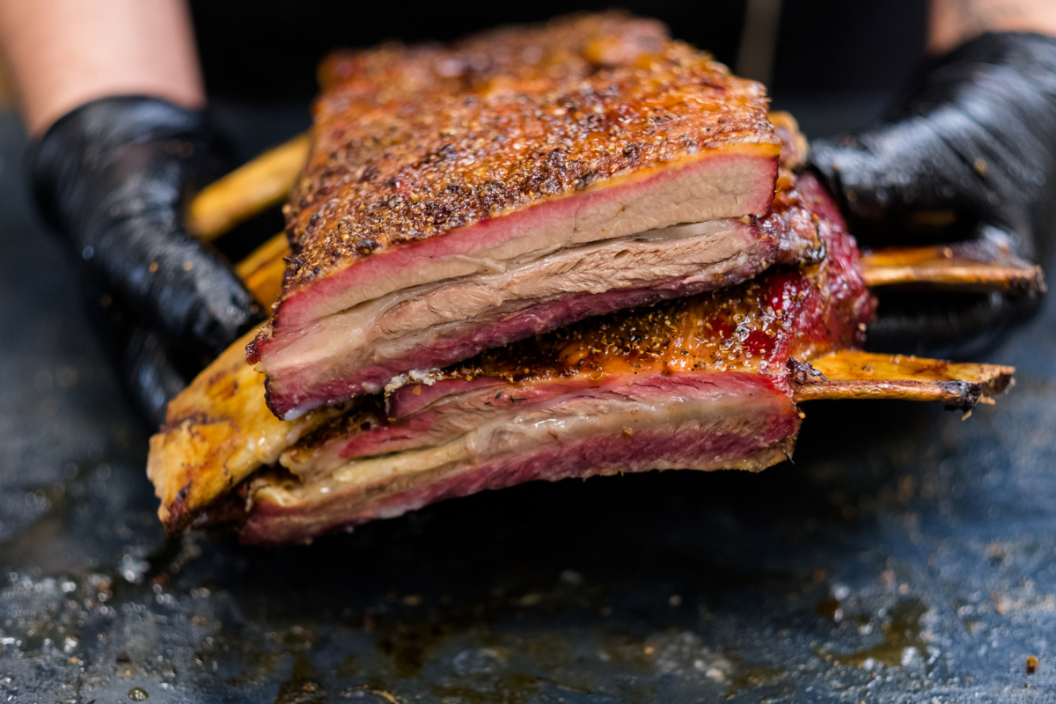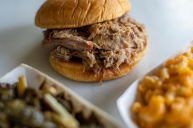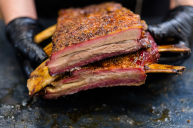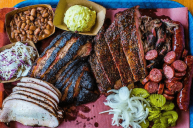To say that the South takes its barbecue very seriously would be the understatement of the century-Southern communities spend generations honing and perfecting their BBQ techniques, and "barbecue" as a concept is a wider umbrella than many assume. Different regions of the South have their own proprietary BBQ styles, each with a unique personality. Here, we're breaking down the most famous southern barbecue styles from six Southern states renowned for their smoking and grilling prowess.
Videos by Wide Open Country
Texas
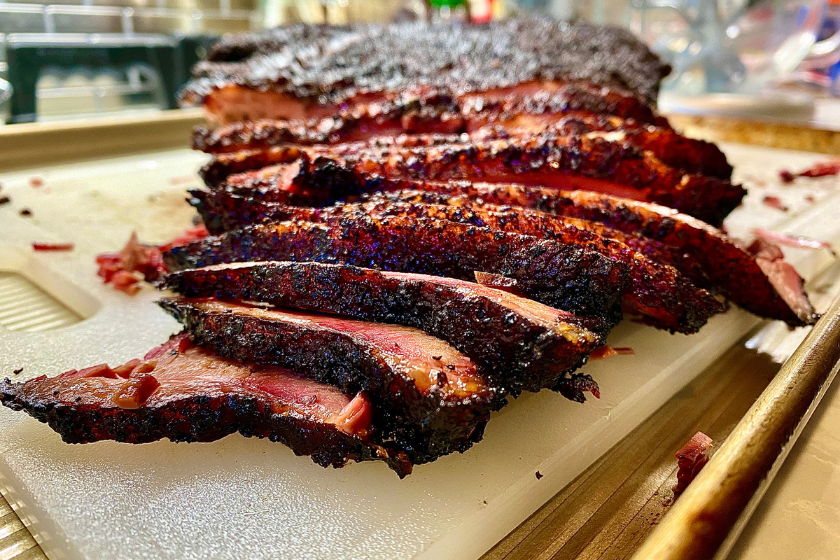
iStock/Getty Images
Central Texas BBQ
The Lone Star State takes enormous pride in its famous southern barbecue, but it's important to remember that Texas is a very big state and that the specific flavors and processes associated with "Texas BBQ" vary from region to region. But when many people think about "Texas BBQ", they picture the "low and slow" smoked brisket that's a signature of Central Texas.
The Central Texas BBQ region includes the Texas Hill Country, the Austin metropolitan area, and the San Marcos area between Austin and San Antonio. Central Texas BBQ chefs use wood smoking to infuse their dishes with flavor, and most barbecue venues in this area utilize post oak, a type of white oak that's commonly found in the area. Post oak imparts a delicate and elegant woodsy flavor, which highlights the natural taste of the meat without overwhelming it.
According to Central Texas BBQ chef and restaurant owner Adrian Davila of Davila's BBQ in Seguin, Texas, the BBQ of Central Texas isn't sauce-based. While most BBQ venues will provide sauce upon request (more on Texas-style BBQ sauce later), "you'll never find wet ribs or pre sauced [BBQ]." Instead, most Central Texas BBQ is dry-seasoned in a very simple way, "usually [with] just a salt and pepper rub." The flavor comes from the meat itself, along with the slow-smoking process that provides a beautifully savory layer of taste and scent, and the fat, which brings a rich and buttery quality to the meat.
Central Texas BBQ chefs regularly prepare homemade sausages and both pork ribs and beef ribs. However, the most popular BBQ item in Central Texas is, without question, beef brisket. Brisket, a cut from the breast and pectorals of the cow, is somewhat tougher than other beef cuts and includes connective tissue. For that reason, it needs to be cooked for a long time at a low temperature to tenderize the meat and bring its deep umami flavor to the forefront.
East Texas BBQ
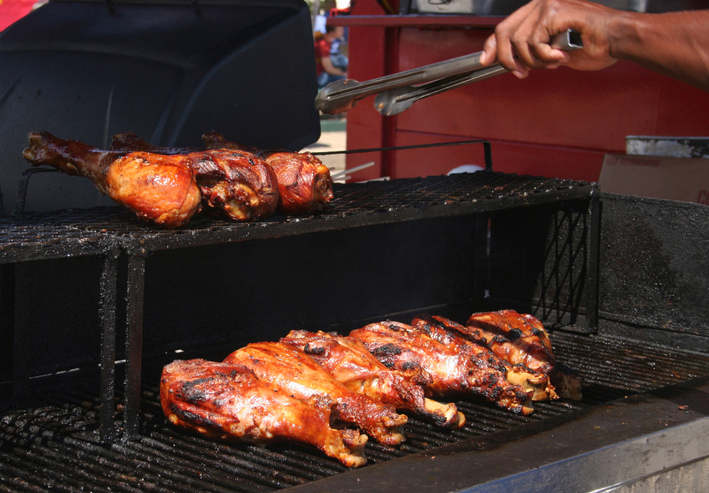
East Texas BBQ, like Central Texas BBQ, adheres to a strict "low and slow" cooking method. Nevertheless, a few key distinctions set East Texas BBQ apart from its Central cousin. For one thing, East Texas doesn't hesitate to use marinades and "mop sauces" to season its meat throughout the cooking process and when serving said meat. East Texas barbecue sauce is tomato based (usually with either tomato sauce or ketchup as the core ingredient), sweetened with brown sugar, and balanced with vinegar, pepper, garlic, and Worcestershire sauce for umami.
While Central Texas BBQ is typically smoked with post oak, East Texas BBQ favors hickory wood (due to the large quantity of hickory trees planted throughout the region). Hickory smoke is more pungent and stronger in flavor than post oak smoke, imparting a subtly sweet, almost bacon-y flavor to the meat.
East Texas BBQ tends to have more in common with the barbecue from other Southern states than Central Texas BBQ, and one key example of this principle is the fact that East Texas makes and consumes a lot of pulled pork. Pulled pork can be found in Central Texas, but it's far less common than brisket, ribs, and sausage. But in East Texas, pulled pork tossed with Texas-style BBQ sauce can be found at BBQ restaurants and trucks throughout the region.
South Texas BBQ
Thanks to South Texas' close proximity to Mexico, many BBQ traditions from our southern neighbor make their way into the barbecue methods of this part of the Lone Star State. The signature dish of South Texas BBQ is barbacoa, or tender smoked meat made from whole goats or cow's heads. South Texas barbacoa is typically cooked over mesquite coals, which give the meat a boldly smoky flavor that's far more prominent than the flavor of post oak or even hickory wood.
South Texas BBQ sauce is typically made with a base of either tomato or molasses, but the defining factor is the presence of dried chilies. This sauce boasts a distinct heat level, which is a nod to the Mexican influence prominent throughout the region.
West Texas BBQ
Central Texas, East Texas, and South Texas all abide by the "low and slow" theory of smoking. In West Texas, however, grilling over direct heat is a popular move by pro grillers and amateurs alike. West Texas also favors the powerful taste of mesquite wood, and West Texas grillers (like their Central Texas cohorts) don't tend to lean on BBQ sauce, instead relying on flame charring to deliver a smoky and savory flavor. Goat and beef are regularly cooked in this style, but West Texas BBQ chefs also prepare chicken and mutton on their open mesquite flames.
The Carolinas
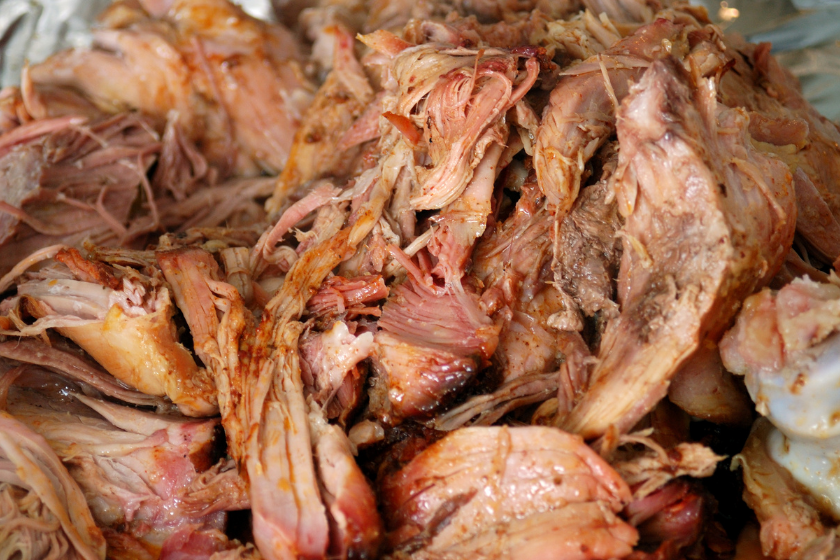
iStock/Getty Images
North Carolina BBQ
Like Texas, North Carolina has a barbecue scene that's clearly divided into regions. Eastern North Carolina BBQ differs substantially from Western North Carolina BBQ...but one thing that both parts of the state have in common is a focus on pork.
In Eastern North Carolina, "BBQ is the whole hog cooked low and slow, chopped, and served with a vinegar sauce with crushed red pepper flakes. It is topped with coleslaw made from mayonnaise," explains North Carolina-based BBQ writer and recipe developer Jeremy Pike of Angry BBQ. The tartness of Eastern North Carolina BBQ sets it apart from all other popular barbecue styles in the United States, as even other areas that use vinegar sauces don't maximize the acidity (and the union of acid and spice) quite as effectively as North Carolina does.
Western North Carolina, on the other hand, is all about "pork shoulders with a red tomato-based sauce," says co-owner and operator Michael Letchworth of Sam Jones BBQ in North Carolina. However, Pike points out that North Carolina's tomato BBQ sauce isn't the sweet version made in some other barbecue regions: "The sauce also serves as one of the ingredients in red slaw, or barbecue slaw. This sauce is not the same as store-bought thick, sweet tomato-based sauces, though. It still incorporates vinegar and pepper to give it some acidity and heat."
North Carolina BBQ (both Eastern and Western) is traditionally smoked over wood coals or charcoal. There isn't one specific type of wood associated with North Carolina BBQ, but oak, hickory, and pecan tend to be popular choices.
South Carolina BBQ
South Carolina also focuses on whole hog BBQ, but while some BBQ pros in South Carolina use a tomato-based barbecue sauce akin to Western North Carolina sauce and others opt for Eastern North Carolina-esque vinegar 'cue, the Palmetto State is best known for "Carolina Gold," a sauce made with yellow mustard, cider vinegar, brown sugar, and a hint of black pepper and cayenne. The result is a tangy and slightly sweet condiment that pairs beautifully with the porcine richness of South Carolina's smoked pork (which, like North Carolina pork, is smoked over coals, whether wood or charcoal).
Tennessee
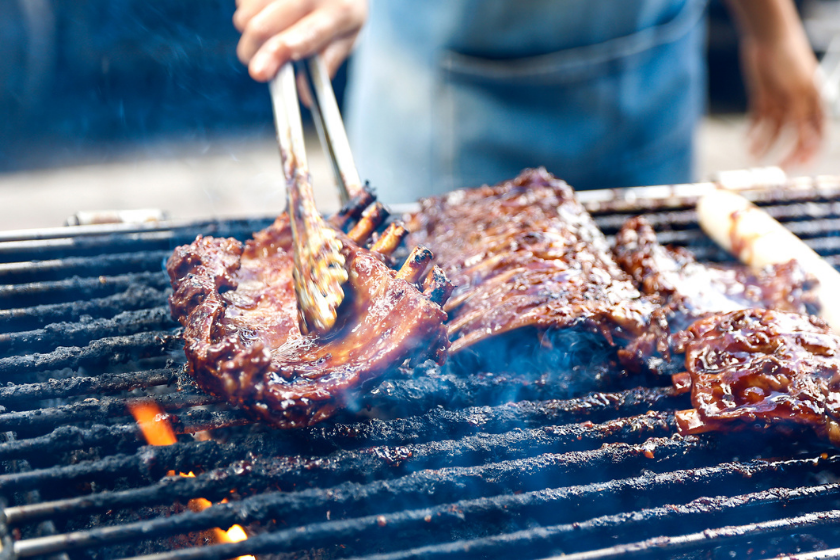
iStock/Getty Images
Memphis BBQ
When we're talking about "Tennessee barbecue," we as a nation are generally referring to "Memphis barbecue". Tennessee's westernmost city claims a rich and long-standing BBQ history, as Tennessee-based private chef Chance Smith of Peace Love & Grub describes: "To the uninitiated, Memphis conjures visions of pink Cadillacs, neon lights, and blues iconography. To the locals and BBQ aficionados, it's all about the pig. Dazzlingly simple establishments called 'joints' specialize in slow smoked ribs, either 'wet'- meaning basted in sauce during the cooking process and finished with sauce afterwards to make a sweet, smoky, slightly spicy, sticky mess of Americana- or 'dry' ribs-[which are rubbed with salt, pepper, and spices before cooking]-, my personal favorite. Warm, salty, spicy, fall-off-the-bone goodness. Of course, the iconic sweet and tangy sauce on the side laden with tomatoes and molasses brings the experience full circle. And then there's the ol' standby and friend to the working class hero, pulled pork. A dry rub, a lot of time in the smoke, and some Memphis voodoo yield an incredible and sultry companion to a bun and slicked pickle- and, of course, the sauce is a must."
Memphis BBQ uses hickory wood for smoking, and while the tender pulled pork that comes from this city is excellent on a sandwich, Smith mentions that "barbecue spaghetti" is a must-try dish for any Memphis BBQ enthusiast. "Does the joint offer barbecue spaghetti? If they don't, I have my doubts about how serious they are," Smith says about this regional specialty, in which pulled pork is mixed with Memphis BBQ sauce, then tossed with cooked spaghetti.
Missouri
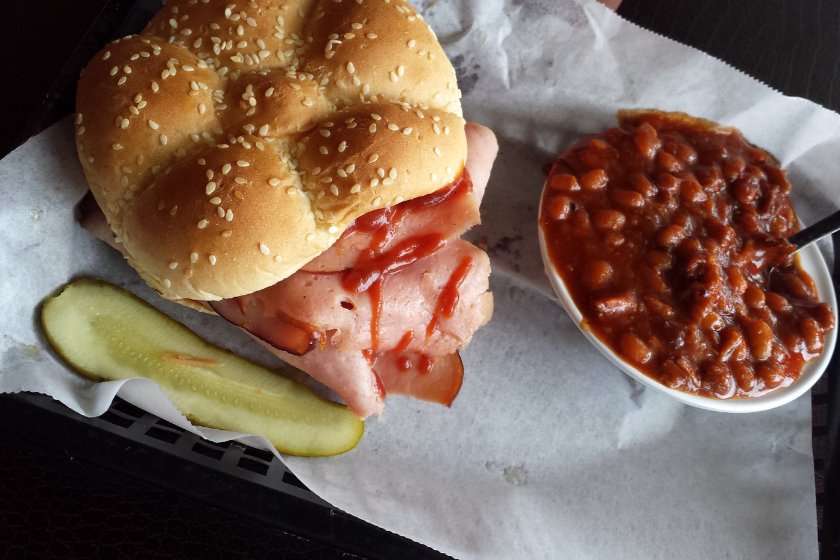
iStock/Getty Images
Kansas City BBQ (Clint Cantwell)
Kansas City's acclaimed barbecue style doesn't focus on one type of meat (as Texas BBQ focuses on beef and Carolina BBQ focuses on pork). Instead, "the cornerstone of all Kansas City barbecue is the sauce," says BBQ expert (and former Kansas City resident) Clint Cantwell of AmazingRibs.com. Kansas City BBQ sauce is the sweetest of all of the famous regional sauces of the South, made from a blend of tomato sauce or ketchup, molasses, dark brown sugar, apple cider vinegar, and a hint of cayenne or chili powder. This style of barbecue sauce may be the most popular mass-market version sold throughout the US, but the best will (of course) be found right in Kansas City.
Another KC signature is "burnt ends," which Cantrell describes as "the burnt ends of cooked brisket that, instead of being thrown out by the barbecue joint, are cut up into cubes, sauced, then served."
Alabama
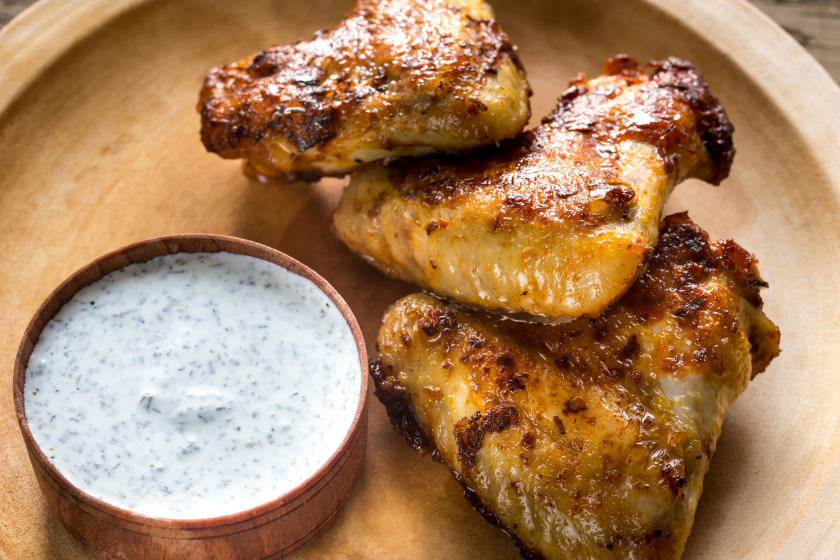
iStock/Getty Images
Alabama White Sauce
Alabama's biggest contribution to the barbecue lexicon comes in the form of a curious sauce traditionally served with grilled chicken thighs. "Alabama white sauce" consists of Duke's mayonnaise (if it's not Duke's, then you're gonna have some angry Southerners at your cookout), white vinegar (to add tang and to thin out the texture), lemon juice (for more acidity and an appealing freshness), a hint of sugar for balance, salt and pepper seasoning, and a few drops of Worcestershire sauce for a savory undercurrent. Some chefs will also include horseradish and cayenne for a spicy kick. This bold sauce marries well with the darker, richer meat of chicken thighs and the smokiness infusing the meat from its time on the grill.
